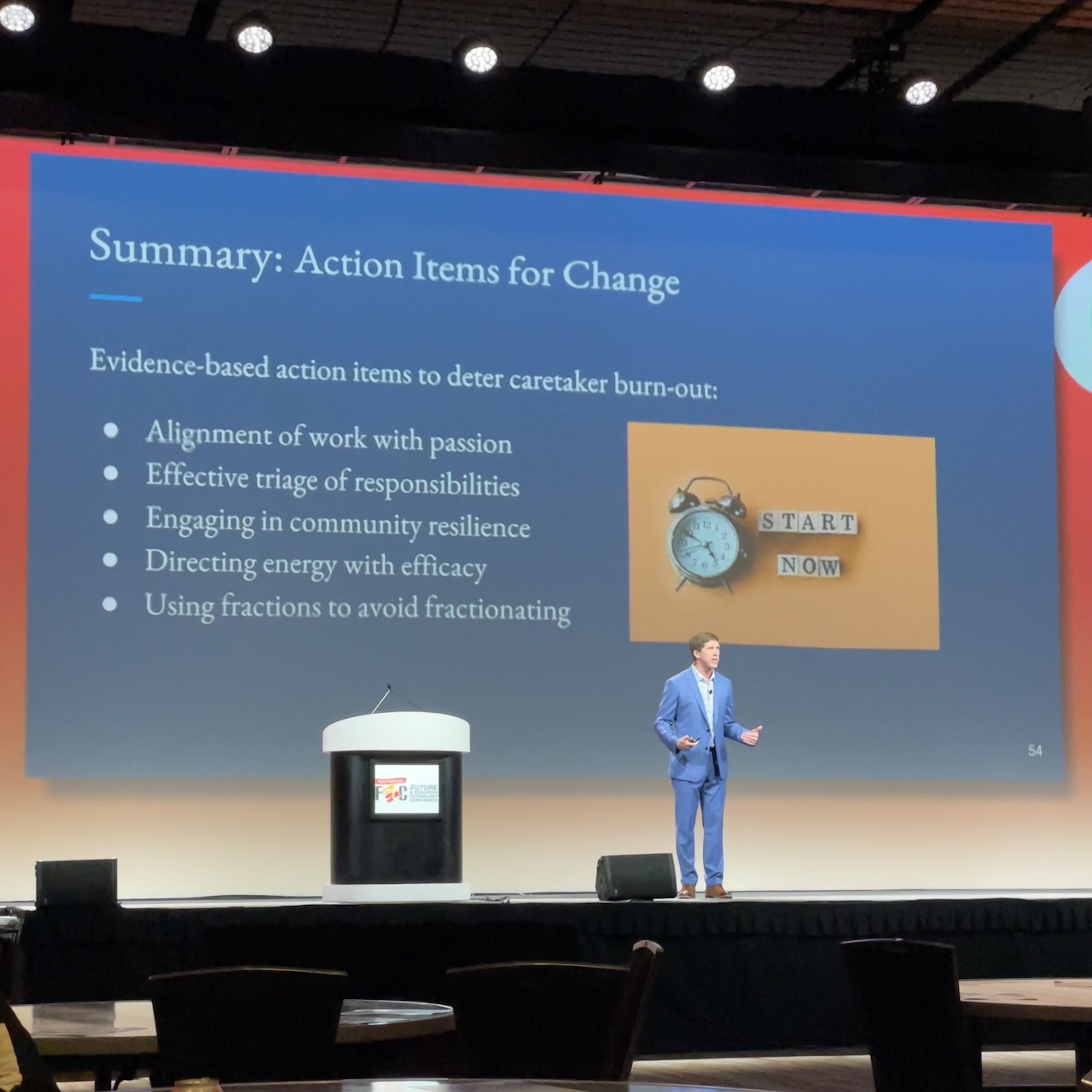How Self-Care Strategies Can Help and When to Use Them
It’s important to remember that “self-care is in the BAG,” said Laura Boone, a collaborative manager at CDW Amplified for Education. She shared the acronym — which stands for breath, affirmation and gratitude — with education leaders Tuesday at her roundtable session “Self-Care Strategies for Staffing Success, Retention and Productivity.”
While it may seem laughable to tell a table full of administrators to take deep breaths, Boone said, the act has proven physiological effects. She also explained that repeating affirmations can build new neural pathways in the brain. She uses this technique herself, leaving affirmative notes in her calendar and encouraged attendees to do the same with their teams. As the roundtable came to a close, Boone concluded by reminding everyone to make their gratitude specific. An attendee at the session added that finding her team’s “work love language” helped her tailor gratitude to individual employees.
Later on Tuesday, Dr. Christopher Jenson, a senior health adviser for the consulting firm Diagnosing Education, admitted that self-care is important and beneficial to the individual. However, he added that it doesn’t solve the underlying cause of educator burnout.
In his megasession, “Immediate Action Items for Staff Exhaustion and Career Burnout,” Jenson leveraged his experiences as a former emergency medicine physician and high school teacher to draw parallels between caregivers in the healthcare and education fields.
In separate surveys of healthcare workers and educators, both cited bureaucratic and administrative tasks as a top cause of their burnout.
LEARN MORE: What is leadership’s role in professional development?
Participants in Boone’s roundtable knew this to be true, even without the exact data projected in front of them. “They want more time,” said Alison Teegarden, director of academic services at Bellevue Independent Schools in Kentucky. She and other roundtable participants brainstormed ways to give time back to educators, with Teegarden sharing that her team takes tasks off educators’ plates anytime there’s an opportunity to do so.
5 Tips to Alleviate the Causes of Educator Burnout
Jenson suggested five evidence-based action items for school districts, based on what has been recommended and proven to work in the healthcare industry. While the actions would involve process and workflow changes, he encouraged school leaders to consider them. “Educators are leaving,” he said. “They’re exhausted. Is it really risky to make operational changes, when they’re already leaving in the first place?”
His suggestions included:
- Alignment of work with passion: Many educators chose this career because they wanted to help students, but — just as doctors struggle to spend quality time with patients — educators often feel pressured to sacrifice time with students to meet necessary standards. Jenson said educators can do both. “There’s never been a time, given the recent mental health metrics for children, where there’s more support to connect with children. If you’re wondering how to fit that into your day, the answer is: You make the discretion in your classroom of what your day is going to look like.”
MORE ON EDTECH: Consider these tech resources for social-emotional learning.
- Effective triage of responsibilities: In the emergency room, triage refers to the order in which patients are treated based on the severity of their conditions. Jenson argued that educators are already experts in triage, that they do it every day for students as part of classroom management. He said that educators need to learn how to triage their own responsibilities, and they should be supported by district administrators, who should triage at the district level.
- Engaging in community resilience: Jenson encouraged listeners to work concurrently, rather than in parallel. Instead of taking on additional tasks individually at the end of the day, teachers can share the workloads they have. He noted that he’s helped schools large and small implement a similar system, allowing educators to split up tasks such as helping students after school and preparing absent work. With a schedule of which educators are tackling which responsibilities during certain weeks, “it provides predictability, job sharing and a lot of happiness,” he said.
- Directing energy with efficacy: “There’s a difference between caring and using energy,” Jenson noted, adding that educators should triage how they use their energy. If educators don’t have the ability and authority to solve a problem, he encouraged them not to waste energy on it.
- Using fractions to avoid fractionating: Educators have a hard time saying no when asked to help, but Jenson said that there are options beyond the binary choices of yes or no. He advised educators to draw a pie chart that divides work responsibilities and to use it when considering taking on a new task. “When someone comes to you asking if you’d do something else, ask them what they want you to trade out for that task,” he said.

Dr. Christopher Jenson, Senior Health Adviser for Diagnosing Education, summarizes his five action items at FETC.











